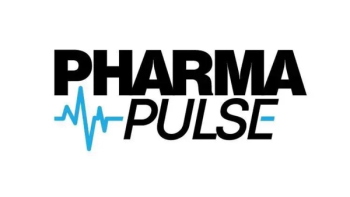
Investigational Duchenne Drug Shows Favorable Efficacy to Exondys 51 in Phase II Trial
SRP-5051 is a next-generation peptide phosphorodiamidate morpholino oligomer showing promise in the treatment of Duchenne Muscular Dystrophy patients with a confirmed exon 51-amenable mutation.
Data from the Phase II MOMENTUM (Study SRP-5051-201) trial show Sarepta Therapeutics, Inc’s novel therapy SRP-5051 (vesleteplirsen) is more effective than Exondys 51 (eteplirsen) increasing dystrophin levels fin patients with Duchenne muscular dystrophy (DMD) who are amenable to exon 51 skipping.1
SRP-5051, a next-generation peptide phosphorodiamidate morpholino oligomer, was developed to bind to exon 51 of dystrophin pre-mRNA, which excludes the exon in mRNA processing in patients with genetic mutations amenable to exon 51 skipping, according to Sarepta.1
“SRP-5051 dosed every four weeks is showing substantially higher increases in dystrophin and exon skipping compared to eteplirsen dosed weekly,” Louise Rodino-Klapac, PhD, executive vice president, chief scientific officer and head of research and development, Sarepta Therapeutics, said in a press release. “The data suggest a favorable benefit-risk profile for SRP-5051 and we look forward to discussing the results and next steps with FDA. As the leader in Duchenne, Sarepta is committed to advancing meaningful treatments for those with Duchenne and other rare diseases where there is unmet need.”1
DMD is the most common type of hereditary neuromuscular disease and is among the most severe forms of inherited muscular dystrophies. The disease has not been found to be more predominant among any specific racial or ethnic group. There is currently no cure for the condition, which has a poor prognosis. Treatment of DMD focuses on glucocorticoid therapy, prevention of contractures, and treatment of cardiomyopathy and respiratory compromise.2
The global, multi-arm, ascending dose MOMENTUM study enrolled 40 patients, both ambulant and non-ambulant, between 8 and 21 years of age. Investigators infused patients every four weeks to analyze dystrophin protein levels in skeletal muscle tissue after administration of SRP-5051 to assess safety and tolerability.
Findings from part B of the trial show that the higher target dose of SRP-5051 at ~30 mg/kg every four weeks produced mean dystrophin expression of 5.17% and mean exon skipping of 11.11% at 28 weeks (n=20). Further, consistent expression of dystrophin was observed in both ambulatory patients (4.76%, n=11) and non-ambulatory patients (5.67%, n=9) at 28 weeks.
Further, the ~30 mg/kg dose of SRP-5051 administered every four weeks produced 5.17% mean dystrophin expression as measured by western blot; 4.53% mean change from baseline, P < 0.0001; mean exon skipping of 11.11% as evaluated by digital drop polymerase chain reaction (ddPCR); and a 10.07% mean change from baseline in exon skipping, which represents 12.2-fold growth in dystrophin expression and a 24.6-fold jump in exon skipping vs. the 30 mg/kg dose of eteplirsen at 24 weeks.
For the low dose of ~20 mg/kg administered every four weeks, the results show a 2.81% mean dystrophin expression as measured by western blot; 1.60% mean change from baseline, P= 0.0012; mean exon skipping of 2.47% as measured by ddPCR; and a 2.00% mean change from baseline in exon skipping, which represents 4.3-fold growth in dystrophin expression and a 4.9-fold jump in exon skipping vs. the weekly 30 mg/kg dose of eteplirsen at 24 weeks.
“The dystrophin production delivered by SRP-5051 in the MOMENTUM study is very encouraging. Importantly, with effective supplementation and monitoring, we have not seen additional complications from the hypomagnesemia,” study investigator Eugenio Mercuri, MD, PhD, head of the Neuromuscular Unit, Catholic University, Rome, Italy, said in a press release. “The results with SRP-5051 to date suggest it could play an important role in the treatment of Duchenne patients with a confirmed exon 51-amenable mutation.”1
References
1. Sarepta Therapeutics Announces Positive Data from Part B of MOMENTUM, a Phase 2 Study of SRP-5051 in Patients with Duchenne Muscular Dystrophy Amenable to Skipping Exon 51. Sarepta Therapeutics. News release. January 29, 2024. Accessed January 29, 2024.
2. Duchenne Muscular Dystrophy. National Institutes of Health. Webpage. Updated July 10, 2023. Accessed January 29, 2024.
Newsletter
Stay ahead in the life sciences industry with Pharmaceutical Commerce, the latest news, trends, and strategies in drug distribution, commercialization, and market access.





